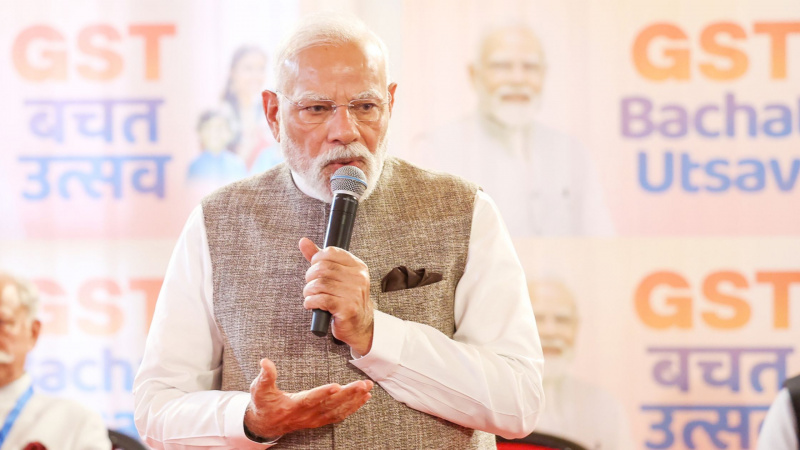Social media data used by Researchers to predict retail failure
Using details from ten different cities all over the world, the researchers, directed by the University of Cambridge, have industrialized a model that can envis
- by Supriti Chatterjee 2018-10-17 17:49:15
Examiners have utilized an amalgamation of social media and carrying data to foresee the possibility that a provided retail business will thrive or unsuccessful.
Using details from ten different cities all over the world, the researchers, directed by the University of Cambridge, have industrialized a model that can envisage with 80% precision whether an innovative business will drop within six months. The consequences will be accessible at the ACM Session on Prevalent and Ubiquitous Computing (Ubicomp), occurring this week in Singapore.
Whereas the retail segment has always been perilous, the previous times with many years have seen a revolution of high highways as increasingly retailers flop. The model created by the researchers might be beneficial for both business persons and city organizers when determining where to find their business or which parts to capitalize in.
"One of the most vital queries for any new business is the quantity of demand it will obtain. This directly communicates to how possible that business is to prosper," told lead novelist KrittikaD'Silva, a Gates Scholar and Ph.D. student at Cambridge's Department of Computer Science and Technology. "What kind of metrics can we make use to make bring forecasts?"
D'Silva and her equals used over 74 million check-ins from the location-based social system Foursquare from Chicago, Helsinki, Jakarta, London, Los Angeles, New York, Paris, San Francisco, Singapore and Tokyo; and data from 181 million taxi tours from New York and Singapore.
Utilizing this data, the researchers categorized places as per to the assets of the neighborhoods in which they were found, the visit outlines at several times of day, and whether districts attracted visitors from other regions.
"We wanted to well understand the foretelling influence that metrics about a place at a certain fact in time have," told D'Silva.
Whether a business prospers or nose-dives is usually based on an amount of manageable and irrepressible aspects. Manageable features might comprise the quality or value of the store's product, its opening hours and its client satisfaction. Irrepressible aspects might contain unemployment proportions of a city, general economic conditions and town strategies.
"We set up that although without information about any of these intense factors, we might yet make use venue-specific, location-related and mobility-based aspects in forecasting the expected death of a business," told D'Silva.
The data presented that all over ten cities, venues that are widespread full-time, before just at some points of the day, are almost certain to flourish. Furthermore, places that are in demand outers of the usual popular hours of other sites in the vicinity tend to live longer.
The data also recommended that places in varied districts, with various kinds of businesses, intend to live longer.
However the ten cities had some resemblances, the researchers also had to reason for their alterations.
You Might Also Like To Read Capgemini report throws light on the number of millionaires in India
"The metrics that were valuable forecasters vary from place to place, which recommends that aspects affect cities in diverse ways," told D'Silva. "As one instance, that the haste of travel to a site is a vital metric only in New York and Tokyo. This might tell the speed of transportation in those cities or maybe to the amounts of traffic."
To check the extrapolative power of their model, the researchers primarily had to decide whether a specific site had closed within the time opening of their data fixed. They then 'trained' the prototypical on a subdivision of sites, saying the model what the characteristics of those sites were in the prior time window and whether the site was open or closed in a next time window. They then established the expert model on next subgroup of the data to check how precise it was.
As per to the investigators, their model displays that when determining when and where to open a business, it is imperative to look further than the set features of a provided community and to contemplate the ways that people travel to and through that area at several times of the day. They now want to deliberate how these features differ all over diverse neighborhoods in order to progress the exactitude of their model.

POPULAR POSTS
The Agentic Revolution: Why Salesforce Is Betting Its Future on AI Agents
by Shan, 2025-11-05 10:29:23
OpenAI Offers ChatGPT Go Free in India: What’s Behind This Big AI Giveaway?
by Shan, 2025-10-28 12:19:11
Zoho Products: Complete List, Launch Years, and What Each One Does
by Shan, 2025-10-13 12:11:43
Arattai vs WhatsApp: Which Messaging App Should You Choose in 2025?
by Shan, 2025-10-10 11:55:06
Top Buy Now Pay Later (BNPL) Apps for Easy Shopping in 2025
by Shan, 2025-09-22 10:56:23
iPhone 17 Sale in India Begins: Full Price List, Launch Offers and Store Availability
by Shan, 2025-09-19 12:00:45
Apple September 2025 Event Recap: iPhone 17, iPhone Air, Apple Watch Series 11, and India Pricing Revealed
by Shan, 2025-09-10 09:55:45
RECENTLY PUBLISHED

Loan EMIs to Drop as RBI Slashes Repo Rate - Full MPC December 2025 Highlights
- by Shan, 2025-12-05 11:49:44

Pine Labs IPO 2025: Listing Date, Grey Market Premium, and Expert Outlook
- by Shan, 2025-11-05 09:57:07

Top 10 Insurance Companies in India 2026: Life, Health, and General Insurance Leaders Explained
- by Shan, 2025-10-30 10:06:42

Best Silver Investment Platforms for 2025: From CFDs to Digital Vaults Explained
- by Shan, 2025-10-23 12:22:46

Zoho Mail vs Gmail (2025): Which Email Platform Is Best for Businesses, Startups, and Students?
- by Shan, 2025-10-09 12:17:26

PM Modi Launches GST Bachat Utsav: Lower Taxes, More Savings for Every Indian Household
- by Shan, 2025-09-24 12:20:59




 Subscribe now
Subscribe now 